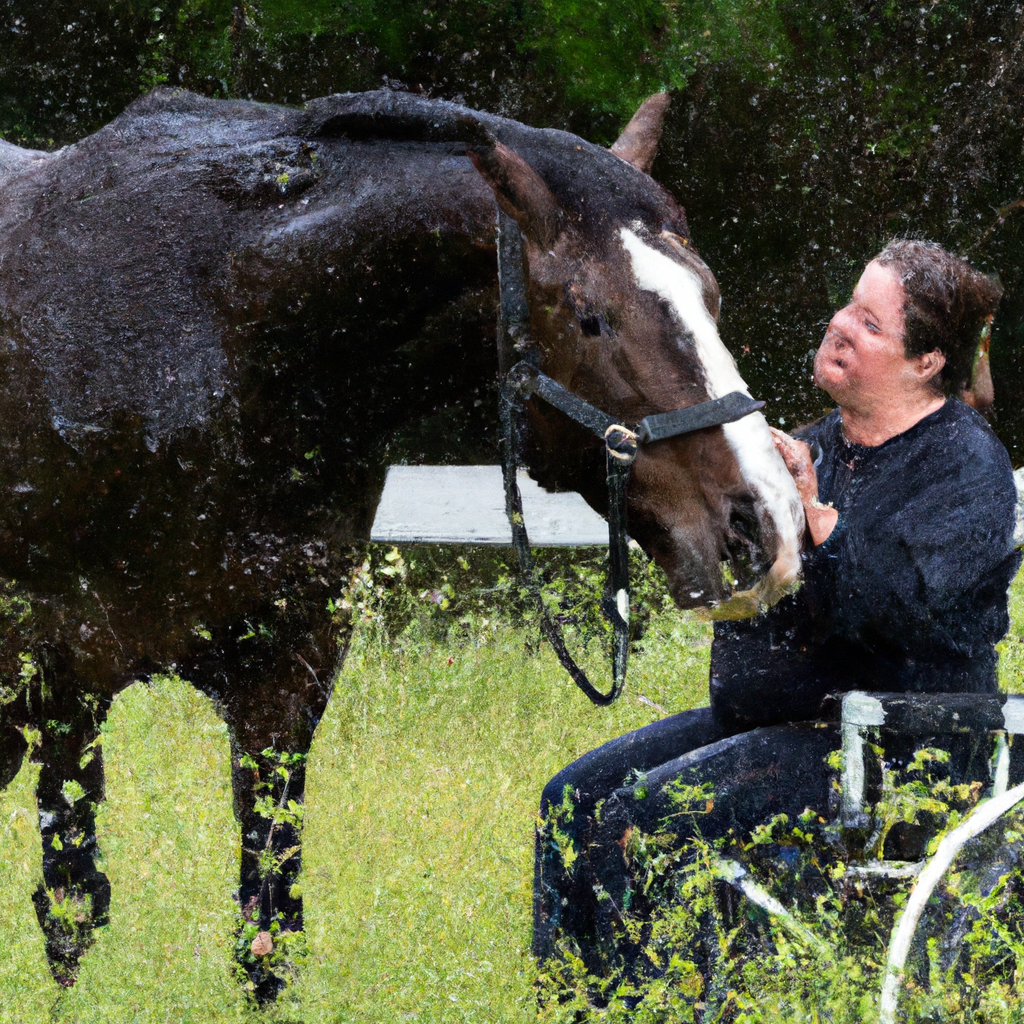Looking to explore the world of horseback riding therapies? Look no further! In this article, we will take a closer look at different horseback riding therapies and how they can be beneficial for both physical and mental health. From therapeutic riding to hippotherapy and equine-assisted psychotherapy, we will delve into the unique benefits that each therapy offers. Whether you’re curious about the healing power of horses or seeking alternative therapy options, this article will provide you with the information you need to get started on your journey towards a healthier and happier you. So saddle up and let’s dive into the world of horseback riding therapies!
Exploring Different Horseback Riding Therapies
Horseback riding therapies have gained popularity as an alternative form of therapy for various physical and mental health conditions. These therapies involve interactions with horses and can provide numerous benefits for individuals of all ages. In this article, we will explore different horseback riding therapies, discuss their benefits, and provide insights into choosing the right therapy for your needs.
1. Introduction to Horseback Riding Therapies
Horseback riding therapies, also known as equine-assisted therapies, involve interactions with horses to promote physical, emotional, and cognitive well-being. These therapies have been used for centuries and have proven to be effective in addressing a wide range of conditions such as autism, cerebral palsy, anxiety, and depression. There are three main types of horseback riding therapies: Equine Assisted Therapy, Hippotherapy, and Therapeutic Horseback Riding.

2. Benefits of Horseback Riding Therapies
Horseback riding therapies offer a multitude of benefits for individuals with various health conditions. The physical benefits include improved coordination, balance, muscle strength, and flexibility. Mental health benefits include reduced anxiety, increased self-esteem, improved mood, and enhanced focus. Additionally, these therapies provide opportunities for individuals to develop social skills, build trust, and form emotional connections with the horses.
3. Equine Assisted Therapy
Equine Assisted Therapy (EAT) is a therapeutic approach that involves activities with horses to address specific goals set by a therapist. It focuses on developing skills such as emotional regulation, problem-solving, and communication. EAT is particularly beneficial for individuals with behavioral or emotional issues, learning disabilities, and trauma-related conditions. Sessions may include grooming, leading, and riding the horse while guided by a trained therapist.

4. Hippotherapy
Hippotherapy is a term derived from the Greek word “hippos,” meaning horse. It is a therapeutic approach that involves using the horse’s movements to stimulate specific bodily responses. The rhythmic and three-dimensional movement of the horse helps individuals improve balance, posture, and muscle tone. Hippotherapy is commonly used for individuals with physical disabilities, cerebral palsy, and neurological conditions such as multiple sclerosis.
5. Therapeutic Horseback Riding
Therapeutic Horseback Riding (THR), also known as adaptive riding or therapeutic riding, focuses on teaching horsemanship skills while addressing therapeutic goals. Individualized instruction is provided to enhance physical and cognitive abilities while fostering emotional well-being. THR is suitable for individuals with a range of conditions, including autism spectrum disorder, cerebral palsy, and developmental delays. It offers opportunities for recreational enjoyment and learning in a supportive and inclusive environment.
6. Mental Health Benefits of Horseback Riding Therapies
Engaging in horseback riding therapies can have significant positive impacts on mental health. The presence of horses can reduce stress levels and promote relaxation. Interactions with horses also contribute to the release of endorphins and the bonding hormone oxytocin, leading to improved mood and decreased symptoms of anxiety and depression. Moreover, the non-judgmental nature of horses allows individuals to develop trust, empathy, and emotional connections.
7. Physical Health Benefits of Horseback Riding Therapies
Horseback riding therapies offer a range of physical health benefits. The unique movements of the horse help individuals improve balance, posture, and coordination. These therapies also work on strengthening core muscles and enhancing overall muscle tone. The sensory input received during riding stimulates the vestibular system, promoting sensory integration and body awareness. Additionally, horseback riding can assist in improving cardiovascular fitness and increasing range of motion.
8. Choosing the Right Horseback Riding Therapy
When considering horseback riding therapies, it is essential to assess your specific goals, needs, and individual preferences. Consultation with medical professionals and therapists specializing in equine-assisted therapies will assist in determining the most suitable therapy. Factors such as the individual’s age, physical abilities, and therapeutic objectives can guide the decision-making process. It is also important to consider the availability of trained staff, proper facilities, and well-trained therapy horses.
9. Safety Precautions and Training
Safety is a crucial aspect of horseback riding therapies. Before starting any therapy, ensure that the therapy center follows safety protocols, including proper equipment, skilled personnel, and well-trained therapy horses. Certified instructors/trainers in horse handling and therapeutic techniques provide a safer environment. Riders should wear appropriate safety gear, including helmets, and receive thorough instructions on horse handling and riding techniques to minimize the risk of injuries.
10. Case Studies and Success Stories
Numerous case studies and success stories showcase the positive impact of horseback riding therapies on individuals’ lives. These include children with autism who have shown improved social skills and communication, individuals with cerebral palsy who have experienced enhanced muscle strength and coordination, and individuals with mental health conditions who have found solace and improved well-being through their interactions with horses. These stories highlight the transformative power of horseback riding therapies and inspire others to consider this alternative form of therapy.
In conclusion, horseback riding therapies offer a unique and effective approach to address various physical and mental health conditions. Whether it is through Equine Assisted Therapy, Hippotherapy, or Therapeutic Horseback Riding, the interactions with horses can provide numerous benefits and lead to positive outcomes. Understanding the diverse benefits, choosing the right therapy, and ensuring safety precautions are vital steps in harnessing the transformative power of these therapies. Explore the possibilities, and discover the joy and healing that horseback riding can bring into your life.
